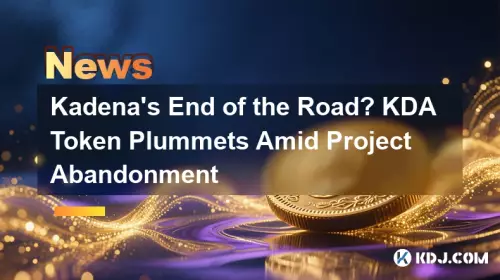 |
|
 |
|
 |
|
 |
|
 |
|
 |
|
 |
|
 |
|
 |
|
 |
|
 |
|
 |
|
 |
|
 |
|
 |
|
Articles d’actualité sur les crypto-monnaies
Banking Fraud Detection Statistics 2025: Prevalence, Impact, and Prevention Strategies
Jan 09, 2025 at 11:00 pm

Banking fraud is a serious and growing problem. In 2025, it’s estimated that banks will lose over $40 billion to fraud. This is a significant increase from the $27 billion lost in 2024.
There are a number of factors contributing to the rise in banking fraud. One factor is the increasing popularity of online and mobile banking. Fraudsters are taking advantage of the convenience of these channels to target consumers. Another factor is the growing sophistication of fraud techniques. Fraudsters are using new and innovative methods to bypass fraud detection systems.
The most common types of banking fraud include:
* Identity theft
* Counterfeit checks
* Forged signatures
* Unauthorized withdrawals
* Wire transfer fraud
* Credit card fraud
* Debit card fraud
* ACH fraud
* Elder financial abuse
Banking fraud can have a devastating impact on both consumers and institutions. Consumers may lose their savings, have their credit ruined, and experience emotional distress. Institutions may incur losses, experience reputational damage, and face regulatory scrutiny.
To combat banking fraud, a number of technologies are being used, including artificial intelligence (AI), machine learning (ML), and data mining. These technologies can help banks to identify and prevent fraud.
In addition to technology, a number of regulatory measures are also being taken to address banking fraud. For example, the Dodd-Frank Wall Street Reform and Consumer Protection Act includes a number of provisions to strengthen fraud detection and prevention.
Recent developments in banking fraud detection include the use of AI-powered chatbots to assist consumers with fraud detection and prevention. These chatbots can provide consumers with tips on how to protect themselves from fraud and can help them to report fraud if it occurs.
As banking fraud continues to evolve in complexity, the collaboration between technology, regulation, and consumer awareness becomes increasingly crucial. The statistics underscore the need for proactive and innovative measures to stay ahead of fraudsters. From AI-driven detection tools to enhanced regulatory frameworks, the fight against fraud is advancing rapidly. However, financial institutions and consumers alike must remain vigilant, as the stakes are higher than ever. Together, these efforts promise a safer, more secure future for global financial systems.
Clause de non-responsabilité:info@kdj.com
Les informations fournies ne constituent pas des conseils commerciaux. kdj.com n’assume aucune responsabilité pour les investissements effectués sur la base des informations fournies dans cet article. Les crypto-monnaies sont très volatiles et il est fortement recommandé d’investir avec prudence après une recherche approfondie!
Si vous pensez que le contenu utilisé sur ce site Web porte atteinte à vos droits d’auteur, veuillez nous contacter immédiatement (info@kdj.com) et nous le supprimerons dans les plus brefs délais.
-

-

- Tests audiovisuels de l'aéroport de Newark de Waymo : le pari de l'IA d'Alphabet est payant ?
- Oct 23, 2025 at 08:36 am
- Les tests de voitures autonomes de Waymo à l'aéroport de Newark signalent la domination d'Alphabet en matière d'IA, impactant à la fois les marchés boursiers et cryptographiques. Est-ce l’avenir du transport et de l’investissement ?
-

-

- Solana, Crypto Advisory et Forward Industries : une minute new-yorkaise sur l'avenir de la finance
- Oct 23, 2025 at 08:00 am
- Forward Industries plonge profondément dans Solana avec un nouveau conseil consultatif sur la cryptographie, signalant un changement majeur dans les stratégies de trésorerie des entreprises. Est-ce l’avenir de la finance ?
-

-

-

- Les pièces King Charles 5p ont atteint la circulation : une quinte royale pour les collectionneurs de pièces !
- Oct 23, 2025 at 07:07 am
- Les pièces King Charles de 5 pence circulent désormais au Royaume-Uni ! Découvrez le buzz, le design en feuille de chêne et pourquoi les collectionneurs sont si enthousiasmés par cette version royale.
-

- Les pièces de 5 pence du roi Charles entrent en circulation : un guide du collectionneur
- Oct 23, 2025 at 07:07 am
- Les pièces de 5p du roi Charles III circulent désormais ! Découvrez le nouveau design, sa signification et pourquoi les collectionneurs sont enthousiasmés. Préparez-vous à partir à la chasse à ces pièces historiques !
-






























































